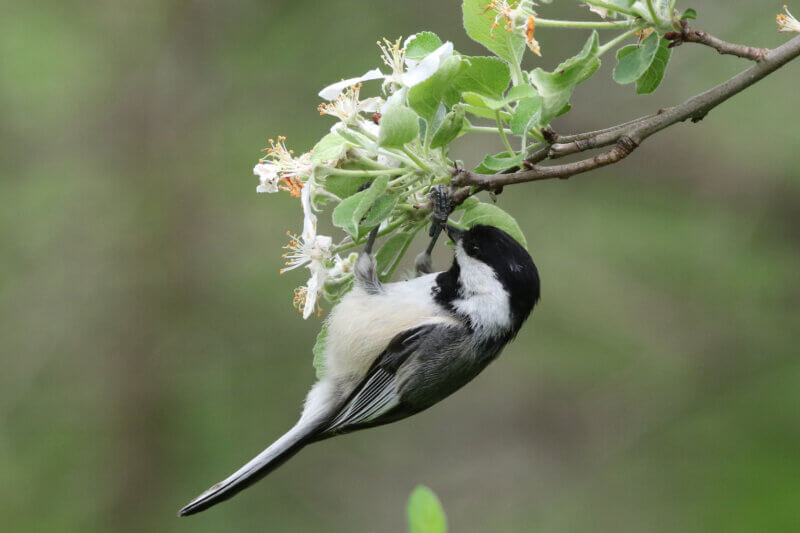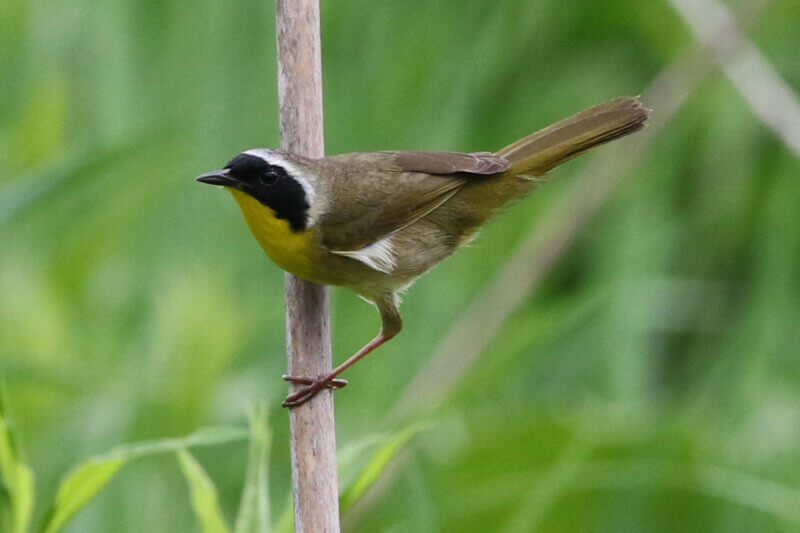Managing forests for birds
What does it mean to manage forests for birds?
While this may seem like a simple question, it’s actually almost impossible to answer. What we call “birds” includes everything from ducks and gulls to hawks and herons, from woodpeckers to hummingbirds, from turkeys to turkey vultures.
Vermont is home to more than 80 species of breeding birds, one of the most diverse breeding bird populations in the United States. Birds are an immensely diverse group of animals with incredibly variable habitat requirements.

For this article, let’s narrow our scope to songbirds. What we call “songbirds” (known by ornithologists as passerines or “perching birds”) includes birds as big as a raven and as small as a chickadee, as common as a robin and as uncommon as a golden-winged warbler. Our songbirds include both year-round occupants and neo-tropical migrants, birds that overwinter in the tropics and migrate to Vermont to breed in the summer.
The first thing that songbirds need is food. Most songbirds are heavily dependent on insects and other arthropods, especially when feeding chicks in the spring and early summer. Our tens of thousands of species of native insects have complex relationships with many species of trees, shrubs and herbaceous plants, as well as being associated with forests of different ages and structural conditions. Managing for insects in the woods means encouraging forests with tree species diversity and structural diversity, big, old trees, a gap-filled forest canopy, dead wood, dead-standing trees (“snags”), cavity trees (trees with holes in them) and areas of young forest. Also key to promoting insect habitat (and thus songbird habitat) is controlling threats to forest diversity, especially non-native invasive plants and deer overpopulations.
While insects are a staple of most songbirds’ diets throughout the year, another important food source is mast — seeds, nuts, fruits and berries. Neo-tropical songbirds will feed heavily on mast (especially soft mast like berries) as they prepare for migration, as will year-round occupants as they prepare for winter. Birds that spent the summer north of us will also snack on soft mast in our forests as they stop over in mid-migration, fueling up for another long night of flying south.
Another important component of songbird habitat is breeding habitat. Just as different species of songbirds utilize different canopy layers (understory, midstory, overstory) for foraging, they also do so for nesting. A forest with a diverse, multi-layered canopy may have rose-breasted grosbeaks nesting in the overstory, red-eyed vireos nesting in the midstory, black-throated blue warblers nesting in the understory and hermit thrushes nesting on the ground. Managing for structural diversity is key to providing breeding habitat for all of our songbirds.

Other important (and often under-appreciated) habitats for songbirds are big, old trees, snags, cavity trees and dead wood. Old trees feature complex bark and canopy structure, providing unique foraging habitat for many birds, especially bark-foragers like nuthatches. Both old trees and snags are important food sources for woodpeckers, which forage for the insects and insect larva that colonize rotten wood. As they forage, woodpeckers create the tree cavities that are nesting habitat for birds from owls to chickadees to wood ducks. As old trees, snags and cavity trees fall over, they create nesting and foraging habitat for birds like winter wrens, drumming logs for grouse and seedbeds for future generations of trees.So, what does it mean to manage forests for birds?
We can’t answer this question without also answering a larger question: How do we manage for healthy, diverse forests that are functional and vibrant and rich with habitat for all of our native species? All of the habitat features mentioned here — species diversity, structural diversity, old trees, dead wood, snags, cavity trees — are key to improving habitat for all of our wildlife. As we manage for them, we simultaneously manage for forests that are resilient and adaptable in a changing climate, for old-growth characteristics (see more here), for water quality, for carbon and much more. One of the joys of managing forests for songbirds is how by doing so we also create and sustain so many other vital things.
To learn more about managing forests for birds, check out Audubon Vermont’s “Foresters for the Birds” program.
